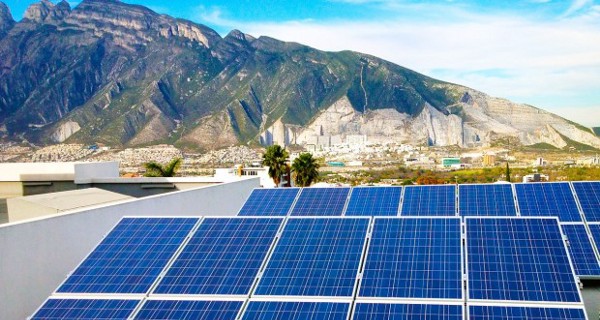Happy 2016 from all of us at Mosaic! After another year of record solar growth in 2015, with 7.4 gigawatts (GW) installed in the U.S. 2016 is already shaping up to be an exciting — but also challenging — year for the solar industry. December saw big policy news stories that could shape the market for years to come, including two incredible boosts on the international and national stages:
- In Paris, negotiators from nearly 200 countries reached a landmark new global agreement to fight climate change. For the first time, all participating countries committed to reduce their greenhouse gas emissions to levels necessary to keep global temperature rises “well below” 2 degrees Celsius above pre-industrial levels. This global plan for action is expected to drive a shift of investments away from fossil fuel drilling and towards investments in scaling up renewable energy — including more growth in the use of zero-carbon solar power all over the world.
- And in the U.S., end-of-year omnibus tax legislation included a massive, surprise stocking stuffer for the solar industry — a three-year extension of the 30% investment tax credit (ITC) that was previously scheduled to expire after next year, followed by a gradual decline in 2021 and 2022. According to projections by Greentech Media, the extension could translate into 25 additional GW of solar power installations through 2020 — more than all the solar power installed in the U.S. to date!
Two big solar growth successes don’t mean that solar energy supporters get to roll the credits and ride off into the (ahem) sunset, however. While these new macro-level drivers are great news, they also raise the stakes for state-level regulatory decisions which determine how much homeowners get paid for their solar generation. These battles are taking place at state public utility commissions (PUCs) and generally concern what is known as “Net Energy Metering” (NEM) — policies that require utilities to only bill consumers for the “net” electricity they use after accounting for all of their solar generation.
While this NEM principle may seem like common sense, many utilities argue that solar-generating customers need to pay more for their electricity or receive less for their solar generation, since they avoid paying grid maintenance charges that are normally bundled into their retail electricity price. On the other hand, NEM supporters claim that distributed solar energy has unique benefits that aren’t being accounted for — including reduced environmental compliance costs, the ability to postpone or even avoid new utility investments in generation, transmission, and distribution infrastructure, and improved grid resiliency.
So, although the national ITC extension will reduce the up-front costs of going solar, decisions by state PUCs on these NEM proceedings will determine solar economics over the lifetime of the investment. This can effectively make or break the prospects of residential solar in a given state; for instance, the Nevada PUC’s recent decision to reduce NEM payments and add new monthly charges for solar homes has led some solar installers to abandon this once-promising market.
According to the most recent, third quarter tracking by the North Carolina Clean Energy Technology Center, over half of U.S. states are either changing or considering changes to their NEM policies. Thus, despite unprecedented policy certainty at the federal level, 2016 has potential to be a tumultuous, defining year for policies shaping the growth of the U.S. solar industry at the state level. We’ll be tracking these stories on a regular basis in this space in the year ahead — stay tuned!
John Atkinson is the director of regulatory affairs for an alternative fuels startup and previously worked as a senior associate focused on energy issues at a DC-based consultancy. He has provided analysis at the intersection of energy, technology, and policy for clients ranging from Fortune 100 companies to startups, covering energy sources ranging from oil and gas to solar and other renewables. He currently lives in Los Angeles in a solar-roofed house, and composes electronic music for live performance and film when not geeking out on energy (or basketball).
